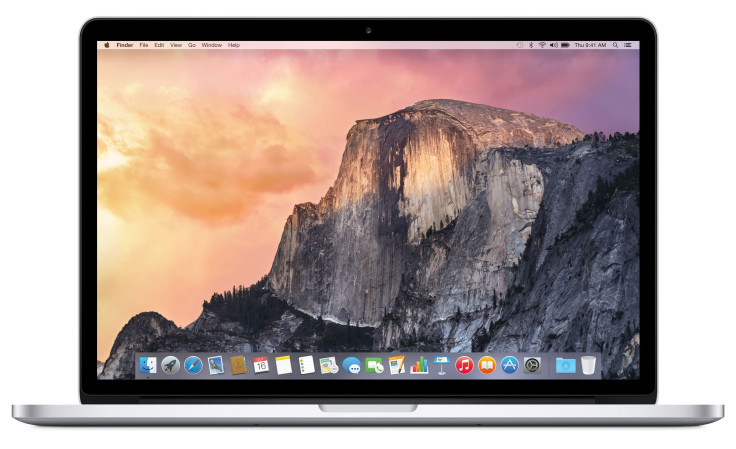OS X Yosemite: 5 Things You Need To Know Before Upgrading To Apple Inc.'s Latest Desktop OS

OS X Yosemite is just a download and install away. The latest OS from Apple Inc. contains a number of new features which make OS X and iOS work seamlessly with each other.
But before you go off and rush to install OS X Yosemite, there’s a few thing you should do to prepare your Mac before upgrading.
Make Sure Your Mac Is Compatible With OS X Yosemite.
While a wide range of Macs are compatible with OS X Yosemite, you’ll still need to make sure that yours falls within one of these categories:
- iMac (Mid 2007 or newer)
- MacBook (Late 2008 Aluminum, or Early 2009 or newer)
- MacBook Pro (Mid/Late 2007 or newer)
- MacBook Air (Late 2008 or newer)
- Mac mini (Early 2009 or newer)
- Mac Pro (Early 2008 or newer)
- Xserve (Early 2009)
All models listed above will have to be running OS X Snow Leopard (10.6.8) or later in order to install OS X Yosemite.
Make Sure You've Got The Minimum Memory And Storage
In order to install OS X Yosemite, the Macs listed above will also require a minimum of 2GB RAM and 8GB of storage. You can check if your Mac meets these requirements by clicking the Apple icon on the top left of the screen and clicking About This Mac.
Find And Remember Your Firmware Password
For the most part, the installation of OS X Yosemite should go off without a hitch. But just in case your install fails somehow, it’s handy to have the ability to boot from an external hard drive or the recovery software partition built into OS X.
Most users won’t run into this problem whatsoever since firmware passwords, which prevent Macs from booting from other drives without a code, are not enabled by default. To check if you have a firmware password set, simply shut down your computer and power it back on while holding the “Option” key down. If a screen pops up with a lock and password entry field, the firmware lock is on.
If you didn’t set this password, your only workaround to getting it off is setting up a Genius Bar appointment at the Apple Store, where the company can reset the password after providing proof of ownership.
Disable TRIM On Third-Party SSDs
Users that have installed third-party solid-state drives on their Macs may have manually enabled TRIM, a process that is used to increase the life of an SSD. This is enabled through the use of various utilities that patch OS X. During the public beta testing of OS X Yosemite, users with TRIM manually enabled found it can prevent OS X from booting after install. In order to avoid this issue, users should disable the patch before installing OS X Yosemite.
Download OS X Yosemite
Once you have those steps out the way, all you need to do from is download OS X Yosemite from the Mac App Store, which requires users to login with their Apple ID. Once the download is complete, just follow the instructions to complete the install.
© Copyright IBTimes 2025. All rights reserved.




















